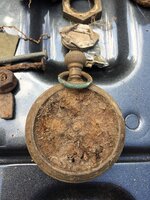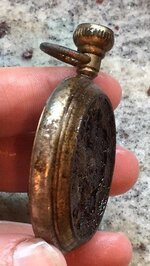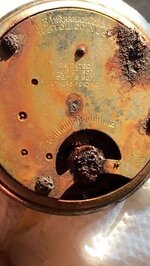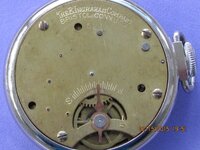Shakakka
Hero Member
- May 11, 2017
- 664
- 1,938
- Primary Interest:
- All Treasure Hunting
Did an old corner of an old town here on Long Island this weekend, and came up with this cool brass(?) pocketwatch.
Not sure when it was made, but it's from The E. Ingraham Company in Bristol Connecticut, and the patent says 1907.
What are those graduations on the back from S |||||||||||| E ? Is that to get a compass bearing?



Not sure when it was made, but it's from The E. Ingraham Company in Bristol Connecticut, and the patent says 1907.
What are those graduations on the back from S |||||||||||| E ? Is that to get a compass bearing?



Upvote
21







